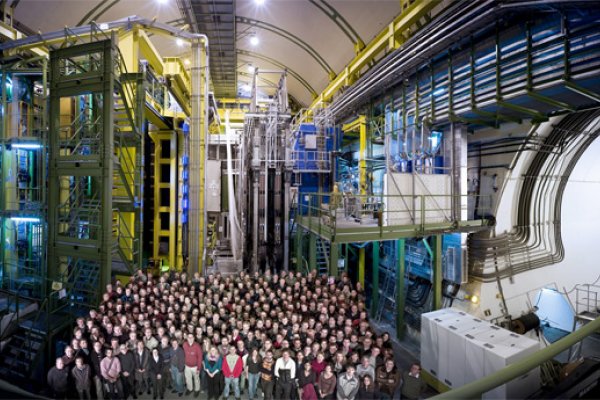The LHCb collaboration presented this past week the first observation of a doubly charmed tetraquark, Tcc+, which is a state with the quark composition ccud. The Institute of Cosmos Sciences of the University of Barcelona participates in this experiment with the researchers Carla Marín, Eugeni Graugés, Lluís Garrido, Ricardo Vázquez and 4 PhD students, who have contributed to the construction and calibration of the detector, as well as to the data collection and its scientific exploitation.
Since the proposal of their existence by Gell-Mann and Zweig in 1964, experimental evidence of tetraquarks and pentaquarks has only been achieved in the last years and so this new detection is a small step forward towards the understanding of the quark model.
The value of this result lies in several facts: first of all, it gives us an insight on the internal mechanisms of quark interactions inside exotic hadrons (which are bound states of four or more quarks) and more specifically between heavy quarks that appear in tetraquarks. At the moment, two scenarios are being considered: one is that the four quarks are tightly bound together and the other is that they are loosely bound in a meson-meson molecule in which the two neutral mesonic structures feel a residual strong force.
This result gives us information about the strength of the interaction between two heavy quarks. Theorists believe that if the quark content of the particle is heavier, then its internal structure will more probably resemble the scenario of 4 tightly bound quarks where the strength of the interaction among them would prevent a strong decay and favour a weak one. In this result we have observed the decay Tcc+→ D0D0?+ with the following quark exchange:
Notice that we have the two initial charm quarks at the final state as well and that the quark flavour is conserved in the interaction. This indicates that the process is mediated by the strong interaction and increases the motivation for the experimental hunt of tetraquarks such as bbud which, due to their heavier quark content, are expected to be stable with respect to strong processes and decay weakly, changing the flavour of the quark composition.
The data of the D0D0?+ decay shows a clear peak representing the Tcc+ tetraquark slightly below the kinematical threshold of D*+ and D0 meson production, as can be seen in the figure below. The proximity of the double-charmed tetraquark mass to this threshold could hint towards the meson-meson structure, although it doesn’t yet rule out the other scenario.
You can read more about this news piece in the following link.



